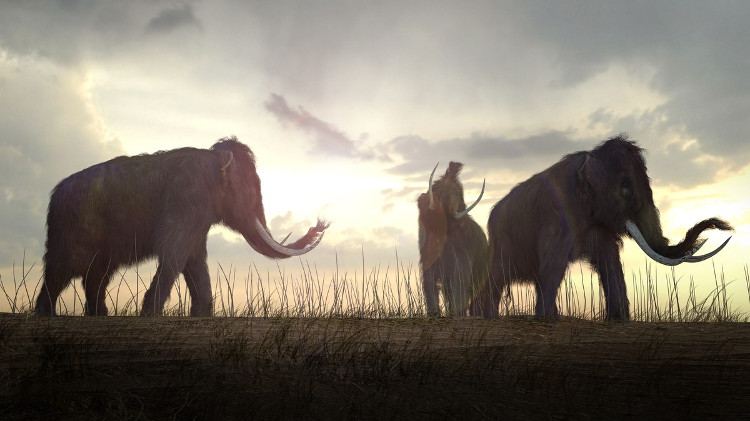Stunned hypothesis, Mamut elephant extinct because of thirst?
The real cause of extinct mammoths is still a controversial issue. However, some recent studies have shown that the last mammoths on Earth may have died from lack of drinking water.
Until recently, it was believed that the mammoth had finally disappeared in Europe and southern Siberia about 12,000 years ago. However, there are still some other assumptions, suggesting that about 8,000 years after the land mammoths were extinct, on the remote island of St. Paul in Alaska still existed some mammoth individuals. . These are the last remaining mammoths on Earth.

Fossils of fine-haired mammoths were also discovered in a cave on St.Paul Island.(Illustration).
Fossils of fine-haired mammoths were also discovered in a cave on St.Paul Island. In particular, there is no sign of human life on this island. So the ability of mammoths on this island to be extinct due to human hunting is not available.
From that inference, scientists have proposed another hypothesis, that: until 5,600 years ago, the only freshwater lake on the island of St.Paul gradually narrowed. The amount of water is not enough to supply large size mammoths. So they die slowly and the mammoths are completely extinct.
Scientists have also studied the sediments of the lake bottom and found traces of ancient plants, animals, fungi and even traces of the giant elephant's DNA. In addition, they found an increase in saline tolerant algae and crustaceans in the lake about 6,000 years ago, indicating that the amount of freshwater in the lake at that time was less and more salty over time. sea level rise.
Some islands in the South Pacific are currently experiencing similar water shortages due to sea level rise. That's bad news for islands and coastal areas where there are large animals, need lots of fresh water to survive.
- Decipher the mystery of thirst: Why does it form and why does it disappear?
- People have nighttime sleeping habits thanks to ... extinct dinosaurs?
- Challenge the meteor hypothesis that extinct dinosaurs
- Discovered strange elephant shrews in Kenya
- Video: Auction of giant eggs
- The truth about Chinese elephants was extinct 3000 years ago
- Wild buffalo buffalo elephants fly a few meters
- Elephant Gold - 'treasure' of the Dak Lak Elephant Conservation Center
- Discovered strange pink elephant in Thailand
- Discovered 60,000-year-old fossil elephant skeleton
- Video: Humorous scenes of mother elephants rescuing children from drowning
- The black elephant 'strum' is close to the white elephants
 Discovered an ancient centipede fossil 99 million years old
Discovered an ancient centipede fossil 99 million years old Discovered bat-like dinosaurs in China
Discovered bat-like dinosaurs in China Discovered a 200-year-old bronze cannon of the coast
Discovered a 200-year-old bronze cannon of the coast Discover 305 million-year-old spider fossils
Discover 305 million-year-old spider fossils